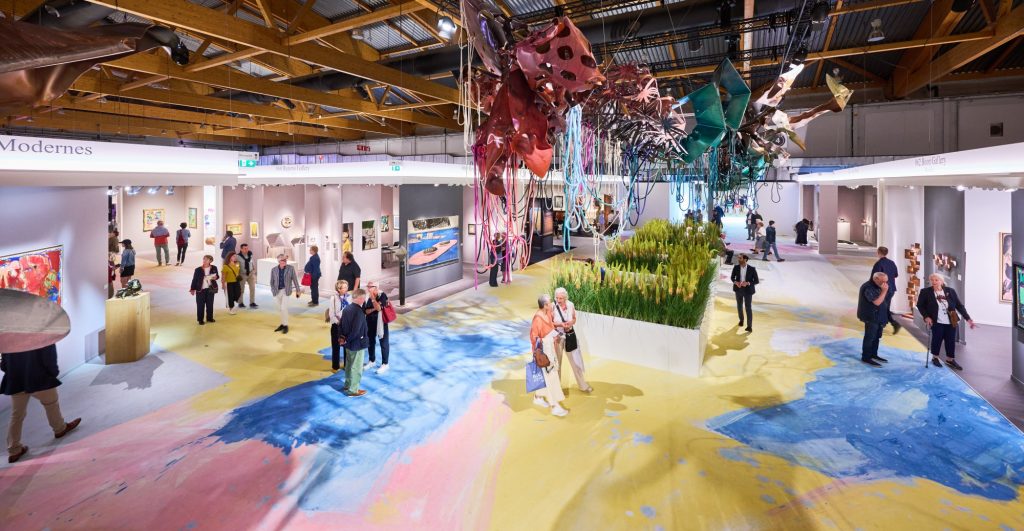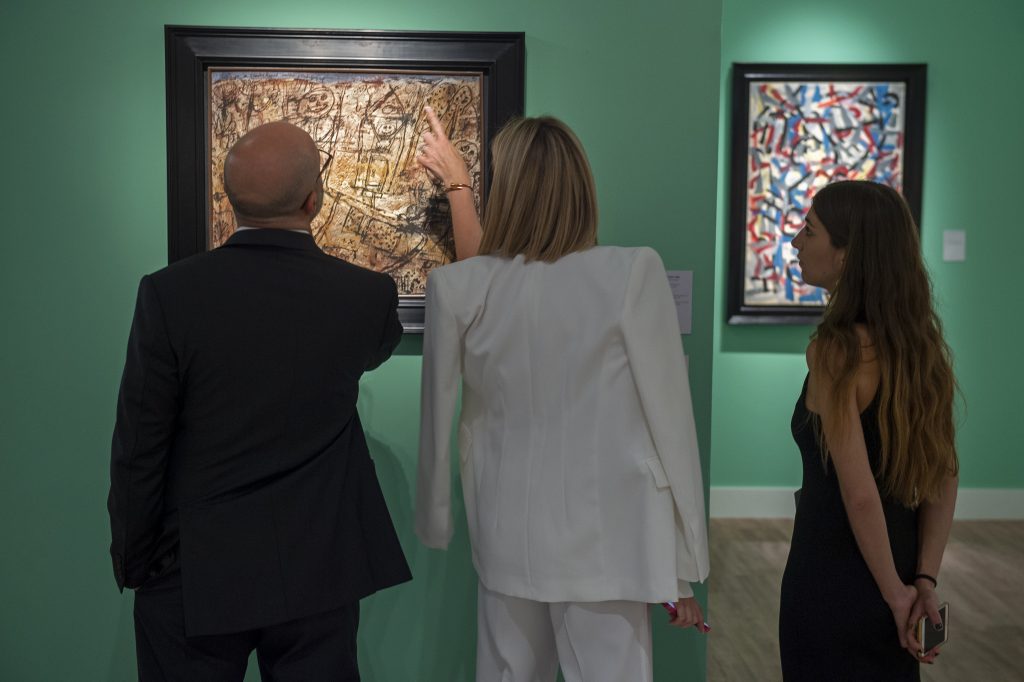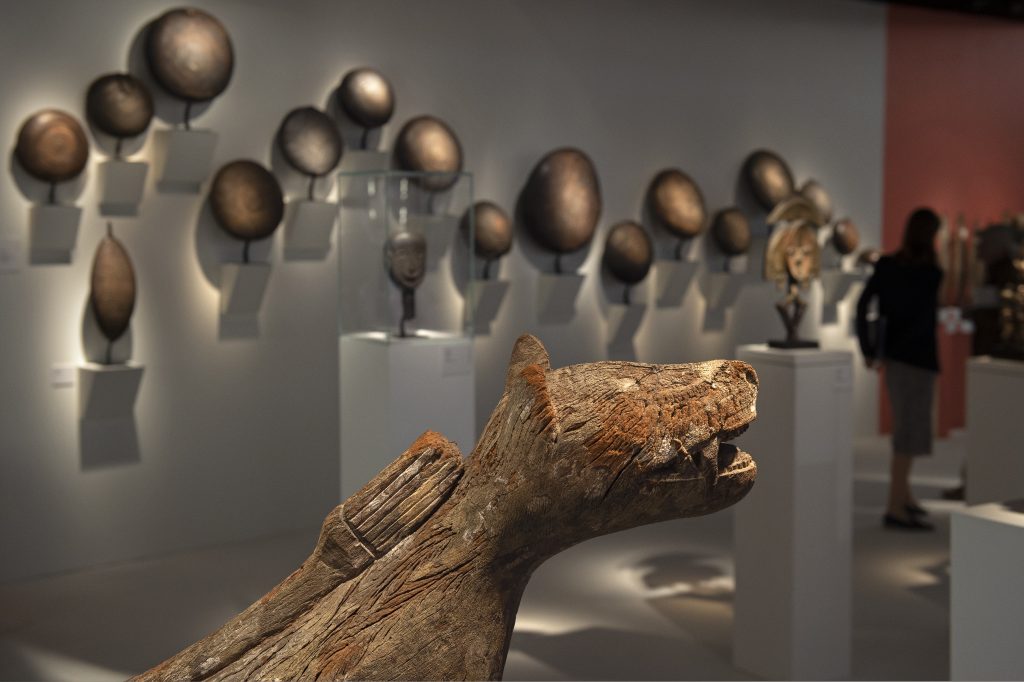Artnet News Pro
‘This Year Is Very Sporty’: European Dealers Hustle to Close Deals at BRAFA During a Packed Summer Art-Fair Season
After pandemic delays, the Brussels fair is uncomfortably squeezed between Art Basel and TEFAF Maastricht.

After pandemic delays, the Brussels fair is uncomfortably squeezed between Art Basel and TEFAF Maastricht.

Anna Sansom

June is a bumper month in this year’s European art fair calendar. As Art Basel was in full swing last week, BRAFA opened in Brussels, just a few days ahead of TEFAF Maastricht. With BRAFA (through 26 June) exceptionally sandwiched between Europe’s titan fairs, numerous gallerists have been scrambling to participate in two events out of the three.
BRAFA was due to take place in January and TEFAF (the European Fine Art Foundation) had originally scheduled its Maastricht edition in March. But due to a spike in Covid-19 infections in December and January, both fairs postponed their dates to June. The change in dates forced BRAFA to switch location from its usual venue, Tour & Taxis, to Brussels Expo, where the fair was historically held.
The number of exhibitors at BRAFA—an eclectic fair offering Old Master paintings, antiquities, tribal arts, and modern and contemporary works—is down from 133 galleries at its last edition in January 2020 to 115 galleries this year.
Among those skipping BRAFA’s 67th edition are David Aaron in London and the Paris dealers Steinitz and Tanakaya, which are participating in TEFAF; Gladstone Gallery, which opted for Art Basel; and Gokelaere & Robinson in Paris and Brussels, which went for Design Miami/Basel.
Over a dozen galleries have remained loyal to both BRAFA and TEFAF. While some exhibitors are taking the clashing dates in their stride, others expressed irritation at the added costs and pressure as well as the organizational difficulties.
“It’s not ideal but we’re pleased that everything is starting again and to be welcoming our clients so we didn’t hesitate about participating in both fairs,” Daisy Prevost-Marcilhacy, the director of Geneva’s De Jonckheere Gallery, told Artnet News. At BRAFA, De Jonckheere is presenting Modern art by Lucio Fontana, René Magritte and Salvador Dalí alongside Flemish paintings by Pieter Brueghel the Younger. At TEFAF, where mixing works from different periods is impossible due to the fair’s genre-specific sections, De Jonckheere is focusing on Flemish Old Masters.

Bailly Gallery’s stand at BRAFA. Photo © Emmanuel Crooÿ
There is a general consensus from dealers that a clash of fair dates this season was unavoidable. “The fair organizers had no choice and I take my hat off to them because we wouldn’t like to be in their shoes,” said Charly Bailly, the co-owner of Bailly Gallery in Paris, which is presenting works by Degas, Kees Van Dongen and Picasso at BRAFA. “This year is very sporty, mentally as well as physically, but we’re confident about the success of the two very different but complementary fairs. Collectors come to BRAFA to buy something they love whereas they go to TEFAF to find museum-quality pieces.”
The larger galleries have found it less onerous to juggle things around. “The size of our gallery means that it’s not too complicated for us to do both [BRAFA and TEFAF],” said Antoine Lorenceau, the co-owner of Brame et Lorenceau in Paris, which is presenting works by Alexander Calder and Hans Hartung at BRAFA. Florence de Voldère, another Parisian dealer who is doubling up in Brussels and Maastricht, said: “It’s marvelous to have four big fairs—Art Basel, BRAFA, TEFAF and Masterpiece in London—around the same time and it might bring over more American collectors.”
However, smaller exhibitors admit to struggling with the overlapping dates. “It’s a catastrophe as one needs double the objects for the same dates,” said Antonia Eberwein from Galerie Eberwein in Paris. With only one or two assistants at each fair, Eberwein is traveling back and forth between Brussels and Maastricht all week in order to install and pack up her stands. “I certainly wouldn’t do all this again,” she added.

At BRAFA, Serge Schoffel is presenting 17 plates recently collected from Papua New Guinea among other works. Photo © Emmanuel Crooÿ
Serge Schoffel, a tribal arts dealer from Brussels, said that he had “risen to the challenge” of doing both BRAFA and TEFAF but that it had been “difficult to find enough works for the two fairs”. At BRAFA, he is presenting 17 plates recently collected from Papua New Guinea and bearing sculpted motifs of rituals and bats, among other works.
Fellow Belgian tribal arts dealer Didier Claes is skipping TEFAF this year to prioritize BRAFA. “It would have been impossible to present 30 objects of exceptional quality simultaneously at both fairs,” director Alexandre Claes said. “Usually we do both and have two months to prepare for TEFAF after BRAFA.”
Benjamin Proust also declined TEFAF and has returned to BRAFA after several years of absence. “TEFAF proposed a small, badly situated stand and there’s no point exhibiting if one can’t show works in the conditions that one would like,” he said. Proust has recently relocated to Paris, where he is seeking a gallery space, since closing his space in London. “In post-Brexit London, my job amounted to filling in shipping documents all day long, whereas my real job is about finding objects.”

Rodolphe Janssen, BRAFA. Photo © HV Photography
While Belgian collectors are known to take their time before making an acquisition, the initially slow sales at BRAFA caused some dealers to worry that their buyers might not even turn up.
“I’m afraid that my contemporary art collectors will be too exhausted to come to BRAFA after Art Basel,” lamented the Belgian gallerist Rodolphe Janssen, who is presenting works by twin brothers Gert and Uwe Tobias and Wim Delvoye. Although Janssen did not participate in Art Basel, he collaborated with the Swiss dealer Eva Presenhuber on an installation by Louisa Gagliardi in the Unlimited section for large-scale works. “The pressure is not just on the galleries but also on the artists; we have to protect our artists and can’t ask for works all the time for all the fairs.”
Dealers showing at both Art Basel and TEFAF echoed these gripes about back-to-back fairs. “There is a strong and quite unpleasant feeling of competition between the fairs, starting with TEFAF in New York in May,” Karsten Greve said. “One weekend we’re in Basel, the next in Maastricht. It’s unfair to expect so many people to hop incessantly from one point to another. With this rhythm, the quality of stands suffers and there’s a lack of personal approach to each client.”
But the London-based dealer Ben Brown, who is also exhibiting at Art Basel and TEFAF in quick succession, struck a more upbeat note. “Our hopes are that the close dates means some collectors, who might have been unable to make it to Maastricht otherwise, will be able to attend both fairs,” he said. “Combined with Venice [Biennale] and Documenta, this makes for a perfect tour for collectors and art enthusiasts who couldn’t travel during the pandemic.”
As the sun was scorching in Brussels, Saverio Repetto of Repetto Gallery was anxious about collectors not showing for another reason. “The problem is the season because some people are away on holiday,” said Repetto, who had sold a work by Christo’s The Umbrellas project in Japan (1984-1991), priced at €130,000. “There is less activity as there are fewer collectors, but it should be returning to normal next year.”